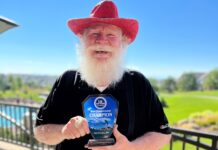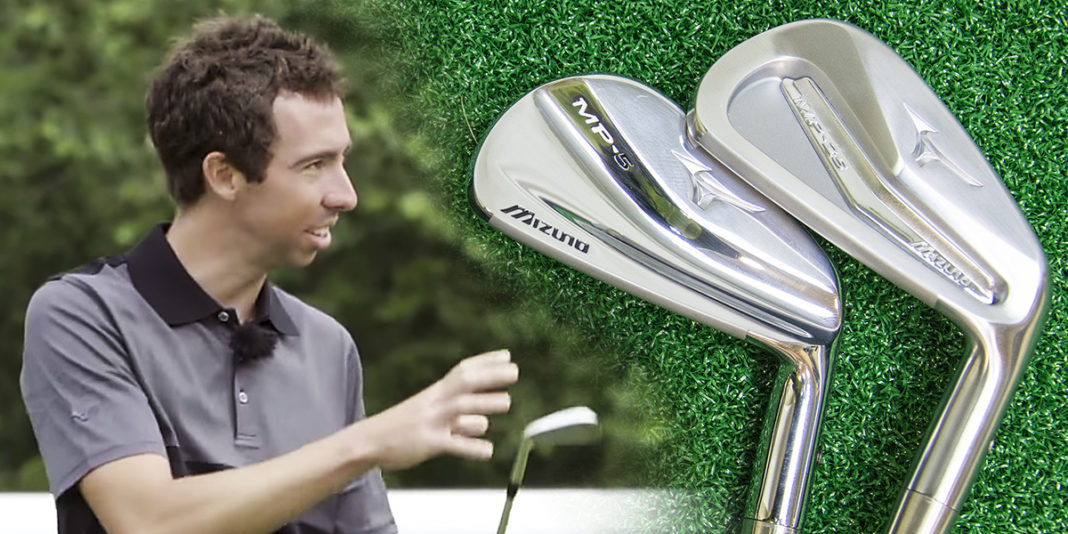By Nick Miller

At GolfTEC, we’re fortunate to work closely with some of the largest and best equipment manufacturers in the game of golf. And being strong advocates for properly-fit equipment to maximize a player’s performance on the course, we’re always excited to speak to the people behind the latest technology.
Mizuno exemplifies the philosophy of properly-fit equipment across its entire club line, so who better to talk to than Mizuno club engineer (and scratch golfer himself), Chris Voshall?
Chris was kind enough to answer our questions about his experience with an industry innovator, how he got started, where he sees the future of golf equipment headed and much more. Let’s jump right in to hear how it’s done with the first installment of our two-part series.
Q: Chris, thanks for taking the time to answer a few questions for us about your club engineering expertise and experience at Mizuno. Let’s start with how it all began — how did you get involved in golf club engineering?
A: I’ve been a golf club junkie for as long as I can remember. As a kid my dad and I used to go to the local golf store every Saturday morning spending hours there looking at all of the new equipment and trying all of the new putters. This is where the love began. In college I was an Engineering Science major, but still spent any free moment I had on the course.
 Upon graduation I tried desperately to get into the industry and was very fortunate Mizuno happened to be opening a club testing facility at the same time. As a Mizuno player myself I hoped to have an edge on the field, and after a number of interviews I was offered a job as the Testing Engineer. From there I tried to be a sponge and learn everything I could from the talented designers in the office. My boss, David Llewellyn, basically pioneered the development of clubs in the 3D CAD world, creating tons of classics like the MP-33 and MP-30, so I just tried – and still do – to learn anything and everything from him.
Upon graduation I tried desperately to get into the industry and was very fortunate Mizuno happened to be opening a club testing facility at the same time. As a Mizuno player myself I hoped to have an edge on the field, and after a number of interviews I was offered a job as the Testing Engineer. From there I tried to be a sponge and learn everything I could from the talented designers in the office. My boss, David Llewellyn, basically pioneered the development of clubs in the 3D CAD world, creating tons of classics like the MP-33 and MP-30, so I just tried – and still do – to learn anything and everything from him.
Fortunately, a few years into my Mizuno career I was given a club engineering/design project, and since then I’ve been fortunate enough to get to develop clubs for one of the most respected companies in the industry!
Q: Mizuno is known for some of the highest quality control standards in the industry. Can you explain how your products stand out, and Mizuno’s mission in this regard?
 A: Mizuno has always been very serious about delivering the highest quality goods with extremely tight quality control standards. This requirement comes from both our Japanese heritage and also from the demands of the type of player to which our clubs tend to appeal. We seek to maintain these high standards through every one of our processes, including forging our clubs in Japan to very exacting tolerances and custom-building our sets in the Unites States with numerous quality inspections along the way.
A: Mizuno has always been very serious about delivering the highest quality goods with extremely tight quality control standards. This requirement comes from both our Japanese heritage and also from the demands of the type of player to which our clubs tend to appeal. We seek to maintain these high standards through every one of our processes, including forging our clubs in Japan to very exacting tolerances and custom-building our sets in the Unites States with numerous quality inspections along the way.
Q: Whenever a new club is released, we hear a lot about things like CG and MOI. Without getting too technical, can you tell us what these features do to impact the distance and forgiveness of a golf club?
A: There are definitely a lot of physics terms thrown around in the golf industry, but really the slight differences in CG (Center of Gravity) and MOI (Moment of Inertia) are what make each club perform in a specific way.
The CG is going to dictate how a club rotates throughout a swing, and also the location of the sweet spot of the club. If a player is able to strike directly on this sweet spot then he or she will get the most energy transfer to the ball. That extra energy means more speed and distance.
The MOI dictates how a club and ball react when the strike is away from the sweet spot. A higher MOI means there is going to be less twisting of the head resulting in less gear effect, resulting in straighter, more consistent shots.
Q: We’ve seen much advancement in club technology over the last 10 to 15 years. Despite these progressions, Mizuno remains a strong advocate for ensuring a proper fit with golf equipment. Why is that? And how do you inject the variable of “fit” into the engineering process of new equipment?
 A: Fitting is at the core of everything we do at Mizuno. When we are starting creation of a new club project we have a checklist of all of the things we will require out of a final product – the ability to be bent and custom-fit is at the top of that list. For a player to be able to see the true benefits of all of the technological advances they first must be able to deliver the club to the ball in the most consistent, efficient way possible, and that’s what a custom-fit set will allow the player to accomplish.
A: Fitting is at the core of everything we do at Mizuno. When we are starting creation of a new club project we have a checklist of all of the things we will require out of a final product – the ability to be bent and custom-fit is at the top of that list. For a player to be able to see the true benefits of all of the technological advances they first must be able to deliver the club to the ball in the most consistent, efficient way possible, and that’s what a custom-fit set will allow the player to accomplish.
Q: There’s the new thing you’ve been using in equipment lately — Boron. We highlighted the Boron story during our first look at the 2016 Mizuno club lineup, but what is it about this material that has you so excited for the future of golf equipment?
A: The exciting thing about the Boron material is that it allows us as engineers to rethink a lot of what we thought we knew about forging golf clubs. Forging is an old process that has continued to evolve through the years but there have always been limitations to the process in terms of minimum thicknesses and geometry rules that have always been just that – “rules.”

With the added strength of the Boron material, we’re now able to rethink many of those rules and create forged clubs that have never been possible in the past. We can create hotter faces, free up more discretionary weight, and mill more extreme shapes. All things that lead to higher-performing forged clubs. It’s such an exciting material and we’re just at the infancy stages of learning what we can do with it!
Be sure to check out Part II when we conclude our sit-down with Chris on where he sees the future of club engineering headed, as well as some of the more memorable experiences he’s had with the best players in the world, including longtime Mizuno staffer and former World No. 1, Luke Donald.










